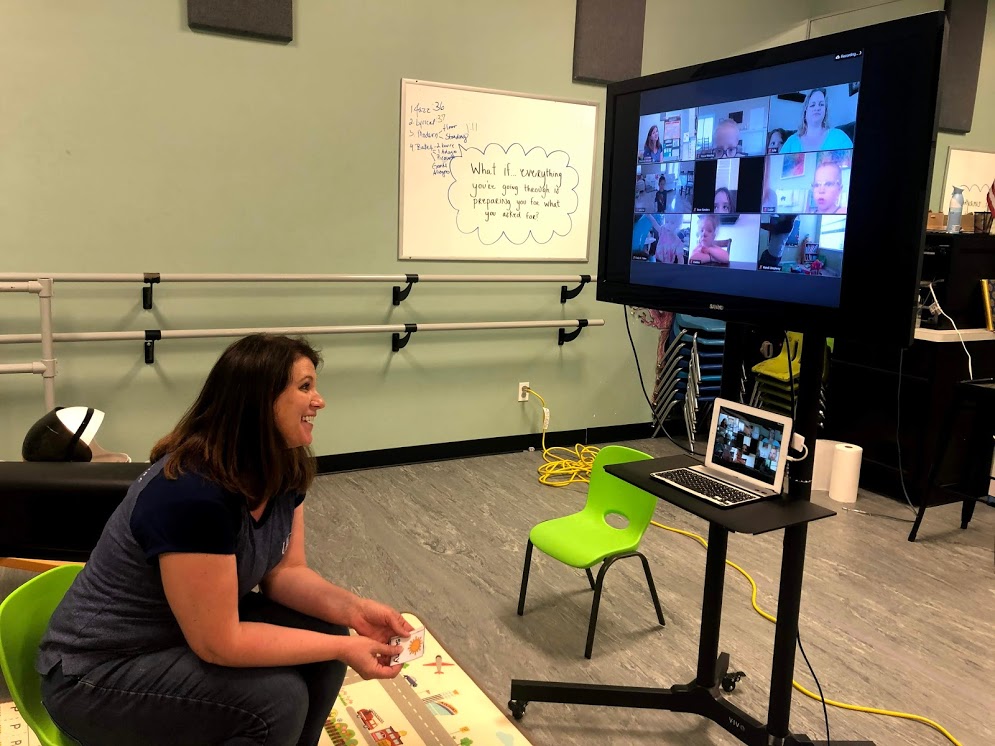Learning should be fun, and at UDA Creative Arts Preschool in Utah, every activity we do is carefully thought out to teach important skills and concepts, while being fun and memorable.
With summer coming up, we thought it might be helpful to round up some of our most popular preschool activities you can do at home. We love to make home life easier for our preschool families, so for each activity in this article, we made sure it meets certain metrics:
- It must be fun
- The activity must be easy
- It must require few supplies and little prep
- It must strengthen a skill or concept (while being fun!)
To that end, here are 12 popular preschool activities for you to do at home. Keep these ideas in your back pocket for spur-of-the moment mood-lifters, gatherings with friends, or a way to get through the lazy days of summer.
Remember, none of these activities need to be done to perfection. And if anyone gets frustrated, it’s always okay to stop!
Indoor Snowball Fight
When it’s too hot outside, retreat indoors and have a snowball fight. Use rolled-up socks and get as creative as you feel. Build forts, construct barriers, or simply use the couch as no-man’s land.
Skills this builds: This builds strength, coordination, creativity, and helps your child find joy in being active.
Travel by Plane or Train
Need to mop under the kitchen table? While you mop, set the chairs in two rows in the living room as if they are a plane or a train. Pull a suitcase out of storage, and let your child “travel” around the world.
Skills this builds: Pretend play builds imagination and creativity, increases vocabulary, enhances problem-solving skills, and so much more.
{Read: Pretend Away: Why Your Child Needs Pretend Play}
Treasure Hunt
Hide something fun (a treat, small toy, special note, or even your child’s favorite stuffed animal), and send your child on a treasure hunt to find it! Make this as simple or complex as you’d like: The simplest way is to write or draw simple clues like, “Go to the refrigerator.” Once your child is at the refrigerator, they’ll find another clue.
You can move up in difficulty by writing or drawing clues that make your child think, like “Go to the place where our food is kept cold.”
Want it to be more complex? Make it an alphabet hunt, where each clue takes your child to the next letter. Or draw a map for your child to read.
Skills this builds: Treasure hunts, even in their simplest form, help your child build critical thinking skills. They have to read or interpret pictures and figure out what to do with the information. Treasure hunts also build reading skills.
Make Your Own Pizza
English muffins are a great canvas for pizza items. Set out pizza ingredients and let your child build their own pizza.
Think of other food items your child can make on their own, or with minimal help: fruit salads (they can cut bananas, grapes, and strawberries), quesadillas, cold-cut sandwiches, etc.
Skills this builds: Making their own food helps children build independence. It also gives them confidence in making their own choices. Plus, it builds fine motor strength.
Try New Foods
Pick a country or region, and learn about the foods that are eaten there. Then, try them together.
Another way to have fun with trying new foods is to pick one type of food and try its different variations: apples are great for this. Family members can vote on their favorite, and you can add different dips to select another favorite.
Skills this builds: Your child learns how to try new things, while paying attention to multiple senses. They also learn about world cultures. And if you make a hypothesis about which will be the family’s favorite, you’re introducing the scientific method.
Car Wash
Indoors or outdoors, car washes are always fun. Fill a bucket with water, soap, and sponges, and let your child give a bath to the toy cars. Want to keep an eye on your child while you’re preparing dinner? Fill the kitchen sink!
Skills this builds: This activity gives your child a multi-sensory experience, which engages multiple parts of the brain. Your child also develops fine-motor skills while having fun.
Red Light, Green Light
Red light, green light is an easy and fun way to kill time. As with all of these activities, you can make the activity as easy or complex as you want. On the easy end of the spectrum, you can simply take turns being “It” and shouting out “Red light” or “Green light.” On the more complicated end, you can make red lights and green lights on papers or craft sticks.
You can change it up — and add some creative thinking and memory-building skills — by designating different colors to mean different things. For example, purple light could mean to hop or dance forward.
Skills this builds: Red light, green light teaches your child skills like following directions, self-regulation, and self management. It also helps your child be active.
Obstacle Course
Obstacle courses are fun ways to pass the time. Use what you have to create areas where your child can jump, spin, climb, balance, crawl, skip, and more.
Skills this builds: Your child gets to develop their gross motor skills, find joy in movement, and learn how to follow directions.
Teddy Bear Picnic
For lunchtime, head outside, under the kitchen table, or spread a blanket on the living room floor. Invite the household teddy bears to join a picnic in their honor.
You can do this popular preschool activity on the spur of the moment, or make this an elaborate, drawn-out celebration where your child creates invitations and party games for the teddy bear guests.
Skills this builds: Creativity! Your child will come up with imaginative scenarios at your teddy bear picnic. This is also a fun and nurturing connection for your family. And if your child turns this into a day-long event, complete with activities and party games, your child will develop writing skills, planning skills, and leadership skills.
Paper Plate Ice Skating
Keep a few paper plates handy for the inevitable choruses of “I’m bored.” Simply step on the paper plates and move around — now you’re “ice skating” in your kitchen and living room!
You can make this activity last longer with races, obstacle courses, and challenges. Write movement suggestions on cards that your child draws at random — backwards, spinning, to music, dancing, etc.
Skills this builds: This activity builds your child’s strength, dexterity, coordination, and motor skills. If you use cards to suggest movements, your child can also improve reading skills.
Paint with Unique Brushes
Find unique tools for painting. Head to the dollar store, and select kitchen items like whisks, spatulas, and brushes. Use vegetables, like peppers and potatoes. Ask your child for suggestions too!
Skills this builds: Your child gets to experiment, which builds imagination, an understanding of the scientific process, creativity, and artistry. They also build fine motor skills.
Scissor Practice
Give your child some safety scissors and head outside to cut the grass. (Just keep an eye out, because your garden might look tempting too!)
Or draw fun lines on paper, and have your child try and cut on the lines.
Skills this builds: Cutting with scissors builds the small muscles in the hands, which are critical for writing, brushing teeth, buttoning, tying shoes, and more. Cutting with scissors also builds coordination.
Come see how we incorporate these, and other fun skill-building activities, into our curriculum at UDA Creative Arts Preschool in Draper, Utah. Give us a call at (801) 523-5930, or contact us online to schedule a tour.



































